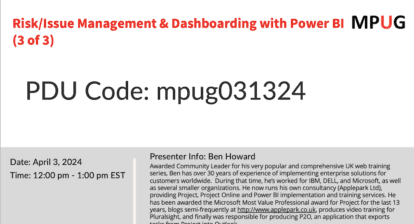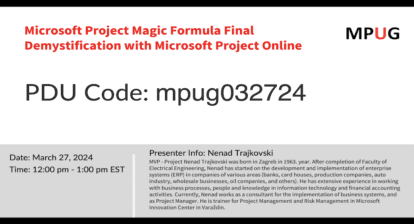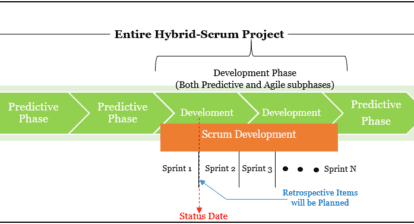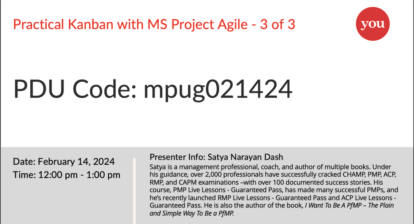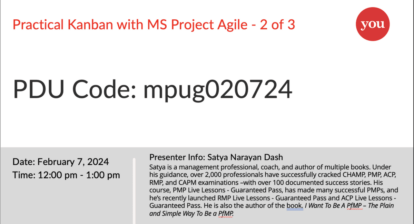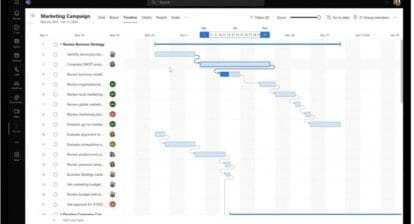Two widely accepted Lean-Agile approaches, iteration- and flow-based, are embraced by Agile practitioners. While iteration-based Agile prescribes an iteration, in flow-based Agile, iterations are not prescribed.
The most well-known framework for iteration-based Agile is Scrum, while Kanban represents flow-based Agile.
Kanban is a Japanese word and loosely translated means “signal card.” In many of our day-to-day lives, we frequently use such signal cards (or Kanban), though we may not be very aware of it. For example, if you have parked your vehicle using a card system in a movie theater, you have used Kanban!
The emphasis in Kanban is primarily on the flow of work. The team pulls a feature or work item from the backlog based on the available capacity, executes the work, and when complete, delivers the work incrementally. The delivery is based on a cadence.

The above figure gives a brief overview of Kanban, where each box is a delivery timeline without any prescribed iteration (i.e., same sized boxes). In each delivery, we have analysis, design, development, testing, and so on. The work in progress limit (WIP) is specific to Kanban and can be set for the workflow states.
Now, the MS Project Agile software allows both Scrum and Kanban. In my earlier webinar series, we have discussed various aspects of Scrum using MS Project. This new webinar is focused on applying Kanban using MS Project.
Questions that may cross your mind at this stage include:
- Can a Kanban Backlog be prepared with MS Project Agile?
- Is there any other backlog needed?
- What are the views, tables, boards, and filters to be used?
- Are there any specific Kanban events and can they be used with MS Project Agile?
- Are there any specific roles in Kanban and how are they reflected in MS Project Agile?
- What Kanban charts can one use with MS Project Agile serve a similar function as burndown and burnup charts in Scrum?
- And more!
To get answers and practical insights, join us for the three-part series of Practical Kanban with MS Project Agile, combining theory with practical applicability and hands-on learning.
As a Kanban practitioner with MS Project Agile, you can:
- Plan for the resources and roles in Kanban
- Plan for the Kanban Backlog
- Use various multiple in-built views to work with Kanban projects,
- Prioritize the Backlog items
- Implement various Kanban events, including Daily Stand-ups
- Enable self-assignment of tasks by self-organizing team members
- Generate a large number of Kanban related reports
- And many more.
While the earlier version of MS Project Agile (i.e., MS Project Online Desktop Client) had Kanban specific template, in recent releases of MS Project software, Kanban has been integrated into overall project management. With it, the software design looks to be more streamlined. We will be using the blank project template to build our Kanban project and learn various functionalities.

It’s not mere “waterfall-ization” of Kanban, because the MS Project (Agile) software has a number of Kanban specific views, filters and other functionalities.
In my upcoming webinar series, we will discuss the following:
- Part 1: Practical Kanban with MS Project Agile
- Part 2: Practical Kanban with MS Project Agile
- Part 3: Practical Kanban with MS Project Agile
There are many naysayers with respect to Kanban framework and its usages or practices. Some term it as:
- “Poor man’s Scrum”,
- “Scrum without timeboxes or iterations”,
- “Only for ticketing support, not for development work,” among others.
I have found that not to be the case in the real-word. There are similarities and differences between Kanban and Scrum. In my interactions with a number of Agile practitioners, I’ve personally seen how Kanban is widely accepted and used. In fact, there are development teams who prefer Kanban over Scrum.
The event series will be based on my experience through interactions, teaching, building a number of Agile/Kanban courses, writing books, and publishing a number of articles and essays with the help of MS Project software tool for nearly twenty years.
It’ll also be based on my previous and ongoing lessons I’ve gathered through working with a number of Agile practitioners.
Hope to meet you in these three exclusive events where we are going to learn Practical Kanban with MS Project Agile.
Register HERE for Practical Kanban with MS Project Agile – Part 1
Elevate your project management skills and propel your career forward with an MPUG Membership. Gain access to 500+ hours of PMI-accredited training, live events, and a vibrant online community. Watch a free lesson and see how MPUG can teach you to Master Projects for Unlimited Growth. JOIN NOW


